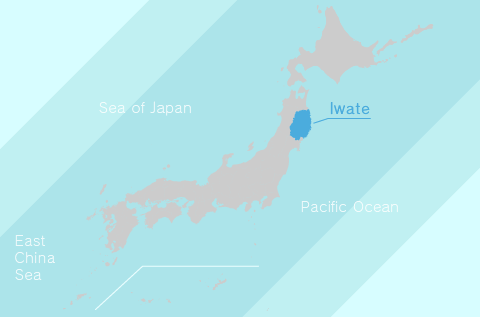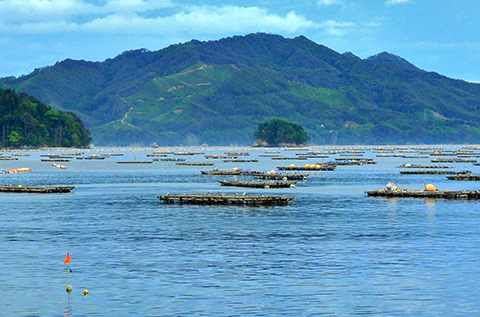What is Japan like?
About Iwate Prefecture

The Location of Iwate Prefecture
Iwate Prefecture is located in the northeastern part of Honshu, Japan’s main island, and has an elongated oval shape stretching from north to south. It is the second-largest prefecture in Japan after Hokkaido, covering approximately 4% of the country’s total land area.
The inland region is predominantly mountainous and hilly, while the northern coastal area features uplifted coastlines, and the southern coast is characterized by ria coastlines, which provide excellent fishing ports and harbors. The calm waters within these bays make them ideal for aquaculture, with abalone and oysters being particularly famous.
The winters in Iwate are harsh, but the cold climate supports the cultivation of crops such as apples, similar to neighboring Aomori. Iwate is also home to the Chuson-ji Konjiki-do, a golden hall designated as a UNESCO World Heritage Site.
The prefecture suffered extensive damage along its coastal areas due to the massive tsunami caused by the Great East Japan Earthquake in 2011. However, the region has since undergone significant reconstruction and recovery, with its towns now revitalized.

Yamada Bay Aquaculture, known for its high-quality oysters and seaweed.
Like other prefectures, Iwate is experiencing a declining birthrate and an aging population, leading to labor shortages. Currently, the number of foreign workers in Iwate is relatively low, with most coming from Vietnam, China, and the Philippines. The majority are employed in manufacturing, while others work in construction, wholesale and retail, agriculture and forestry, as well as education and learning support.
In terms of residency status, nearly half of the foreign workers are technical interns, making up the largest group. Those with visas based on familial or personal ties also form a significant portion of the workforce. These foreign workers play an increasingly important role in supporting Iwate’s labor needs across various industries.

